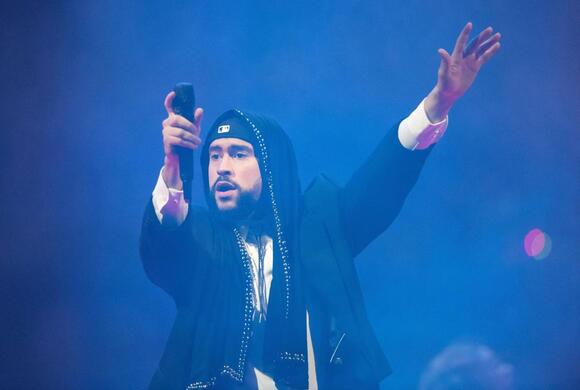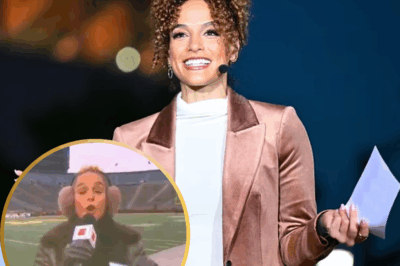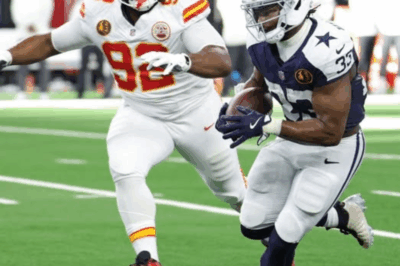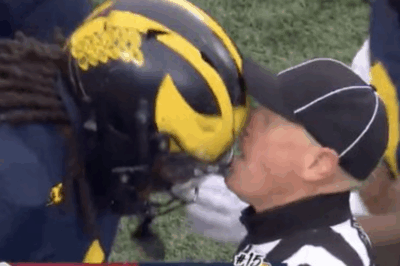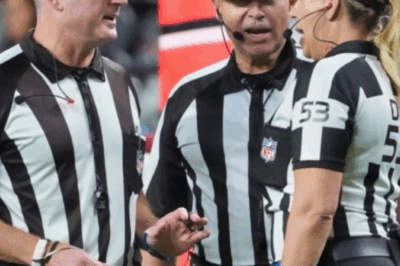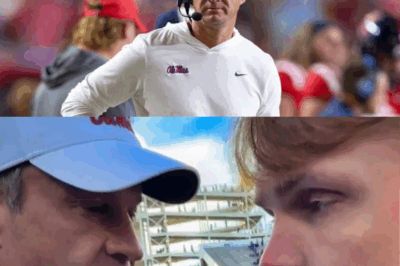The NFL thought their halftime show announcement would be a victory lap. This newly leaked footage proves it’s turning into a nightmare.
As the anticipation for Super Bowl LVIII continues to build, so does the controversy surrounding the NFL’s recent announcement of its highly anticipated halftime show.
The event, traditionally one of the most-watched musical performances globally, has once again become a focal point of public debate, criticism, and media scrutiny.
This article delves into the details behind the recent footage that surfaced, the reactions from fans and critics, and what this means for the NFL’s branding and audience engagement strategies moving forward.
The Context of the Super Bowl Halftime Show
The Super Bowl, the championship game of the National Football League (NFL), holds a unique place in American culture.
Beyond the game itself, the halftime show has become a cultural phenomenon, often featuring top-tier artists, elaborate staging, and memorable performances that resonate across generations.
Historically, the halftime show has been a platform for showcasing musical talent, promoting social messages, and generating buzz that extends beyond sports.
Past performers include legendary artists such as Michael Jackson, Madonna, Beyoncé, and Prince—each performance leaving a lasting impact.
In recent years, however, the selection process and the content of these shows have come under increased scrutiny.
Critics argue that the NFL’s choices sometimes prioritize commercial appeal over artistic integrity, sparking debates about representation, inclusivity, and cultural sensitivity.
The Recent Footage and Its Emergence

The controversy reignited when a snippet of footage related to the upcoming Super Bowl halftime show was leaked or officially released, sparking widespread discussion on social media platforms.
This footage, which many fans and critics analyzed meticulously, appears to reveal aspects of the planned performance—be it staging, artist lineup, or thematic elements—that have generated mixed reactions.
Some viewers expressed excitement and anticipation, praising the production’s grandeur and the potential for a groundbreaking performance.
Others, however, voiced concerns over the choice of artists, the thematic direction, or perceived cultural insensitivity in the show’s concept.
The footage’s leak or release has become a catalyst for broader conversations about transparency, marketing strategies, and the influence of social media in shaping public perception of major sporting events.
Public Reactions and Criticisms
The public response to the footage and the announced halftime show has been polarized.
On one side, fans eager for entertainment and spectacle have expressed their enthusiasm, highlighting the show’s potential to be a memorable highlight of the Super Bowl experience.
On the other side, critics have voiced strong objections, citing issues such as:
Cultural Appropriation: Some argue that certain elements of the show risk crossing lines into cultural insensitivity or appropriation, especially if traditional symbols or performances are used without proper context or respect.
Artist Selection: Concerns have been raised about the diversity and representation of the chosen performers, with some claiming that the lineup lacks inclusivity or fails to reflect contemporary social movements.
Commercialization: Critics suggest that the show has become overly commercialized, prioritizing celebrity appearances and spectacle over meaningful artistic expression.
Social and Political Messages: There is also debate over whether the performance will incorporate or avoid social and political commentary, a trend that has gained prominence in recent years.
The NFL’s Response and Strategic Considerations
In response to the mounting criticism, NFL officials have issued statements emphasizing their commitment to delivering a show that entertains and unites audiences.
They highlight the extensive planning, collaboration with artists, and efforts to ensure the performance aligns with the league’s values.
However, behind closed doors, NFL executives are undoubtedly grappling with balancing commercial interests, audience expectations, and social responsibility.
The halftime show is not just entertainment; it’s a strategic platform that can influence public perception of the league.
This controversy underscores the importance of transparency and engagement with diverse audiences.
The NFL’s handling of this situation could set a precedent for future events, emphasizing the need for careful planning, cultural sensitivity, and authentic representation.
The Broader Cultural and Social Implications
The Super Bowl halftime show has always been more than just a musical performance; it’s a reflection of societal values, cultural shifts, and evolving entertainment standards.
In recent years, there has been a noticeable push for greater diversity and inclusion, with artists from various backgrounds taking center stage.
The current controversy highlights ongoing tensions between tradition and progress. Critics argue that the NFL must be more mindful of cultural nuances and social dynamics when selecting performers and themes.
Meanwhile, supporters contend that the show should prioritize entertainment and artistic freedom.
This debate mirrors larger conversations happening across the entertainment industry, where issues of representation, cultural sensitivity, and social responsibility are at the forefront.
The Role of Social Media and Public Discourse
Social media platforms have transformed how audiences engage with major events like the Super Bowl.
The leaked footage or official previews quickly went viral, prompting widespread discussion, memes, and commentary from fans, critics, and cultural commentators alike.
Platforms such as Twitter, TikTok, and Instagram serve as battlegrounds for differing opinions, amplifying voices that might have previously gone unheard.
Viral hashtags related to the halftime show have trended worldwide, influencing public perception and press coverage.
This democratization of discourse means that the NFL’s decisions are under intense scrutiny, with every detail dissected and debated in real time.
While this can lead to increased transparency and accountability, it also raises concerns about misinformation, sensationalism, and the potential for damaging narratives.
Looking Ahead: What This Means for the NFL and Future Events
The controversy surrounding the Super Bowl halftime show is a reminder that entertainment events of this magnitude are complex, multifaceted endeavors.
The NFL must navigate a delicate balance between delivering a spectacular show that appeals to diverse audiences and respecting cultural sensitivities.
Moving forward, the league may consider:
Enhanced Community Engagement: Collaborating with cultural consultants and community leaders to ensure respectful representation.
Diverse Artist Lineups: Prioritizing inclusivity and social relevance in performer selection.
Transparent Communication: Keeping the public informed about planning processes and thematic choices to foster trust.
Innovative Content: Exploring new formats and themes that resonate with contemporary societal values.
By addressing these areas, the NFL can turn controversy into an opportunity for growth, demonstrating leadership in responsible entertainment and cultural awareness.
The recent footage and subsequent criticism of the NFL’s Super Bowl halftime show underscore the power and influence of entertainment in shaping public discourse.
As the league prepares for its biggest event of the year, it faces the challenge of delivering a performance that is not only spectacular but also culturally sensitive and socially responsible.
In an era where social media amplifies every decision and public opinion can sway perceptions instantly, the NFL’s approach to this controversy could serve as a blueprint for future major events.
Ultimately, the goal should be to create a halftime show that celebrates artistic excellence, respects cultural diversity, and unites audiences in shared experience.
As fans and critics await the final performance, one thing is clear: the conversation surrounding the Super Bowl halftime show is more than just about music or spectacle—it’s about values, representation, and the evolving landscape of entertainment in the 21st century.
News
VIDEO: ESPN Reporter Jess Sims Uses Explicit Language While Covering Cold Weather at Michigan-Ohio State Game: A Viral Moment Sparks Debate
ESPN Reporter Jess Sims Uses Explicit Language While Covering Cold Weather at Michigan-Ohio State Game: A Viral Moment Sparks Debate…
“Tony Romo just broke the NFL’s number one rule. His explosive take on the Cowboys’ win over the Chiefs reveals the one truth the league is desperately trying to silence. You won’t believe what he said.”
Tony Romo Reveals What the NFL Is Too Afraid to Admit About the Dallas Cowboys After Their Stunning Chiefs Victory…
A Super Bowl champion just dropped a bombshell, claiming the NFL RIGGED the Cowboys-Chiefs game. You won’t believe why.
Super Bowl Champion Alleges Rigging in Cowboys-Chiefs Game Over Controversial Officiating on Thanksgiving In a startling development that has sent…
Shocking Incident in College Football: Michigan’s Jaishawn Barham Headbutts Referee During Intense Ohio State Clash
Shocking Incident in College Football: Michigan’s Jaishawn Barham Headbutts Referee During Intense Ohio State Clash In the world of college…
The refs didn’t just make a bad call—they allegedly stole the game. Fans are now demanding a full-scale investigation into the Thanksgiving officiating crew. What did the league just try to hide?
The refs didn’t just make a bad call—they allegedly stole the game. Fans are now demanding a full-scale investigation into…
VIDEO: It got PHYSICAL after the Egg Bowl! Lane Kiffin was caught on camera squaring up with a reporter. You have to see the video.
VIDEO: It got PHYSICAL after the Egg Bowl! Lane Kiffin was caught on camera squaring up with a reporter. You…
End of content
No more pages to load

